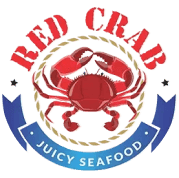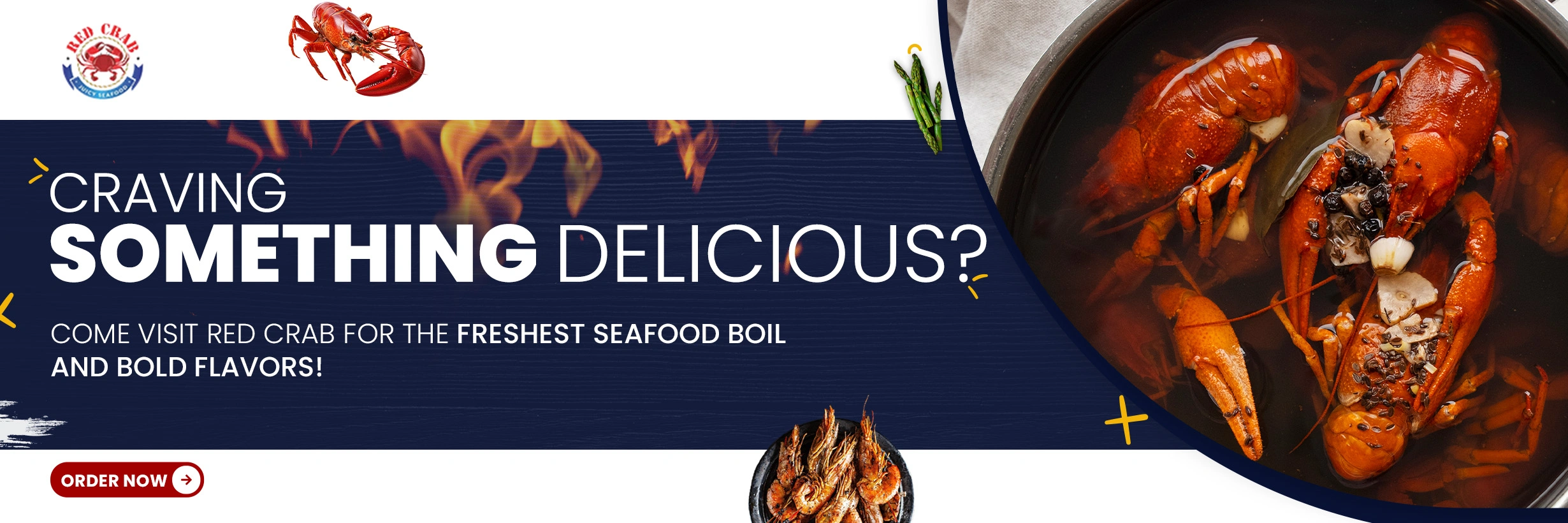Cheese Baked Oysters Recipe
If you’re a seafood lover, cheese baked oysters are a dish you simply must try. This recipe combines the rich, salty flavor of oysters with the creamy, savory taste of melted cheese. Whether you’re planning a special dinner or just want to treat yourself, cheese baked oysters are sure to impress. In this blog, we’ll walk you through everything you need to know about this mouthwatering dish, from its history to step-by-step instructions, and even some tips for the perfect bake.
Table of Contents
Why Cheese Baked Oysters Are a Great Choice?
Cheese baked oysters are a fantastic addition to your seafood menu. The combination of fresh oysters and melted cheese creates a unique flavor profile that is both rich and satisfying.
This dish is perfect for those who appreciate the delicate taste of oysters but want to add a bit of extra richness. The melted cheese not only adds flavor but also helps to keep the oysters tender and juicy while baking. Plus, cheese baked oysters are versatile and can be served as an appetizer, a main dish, or even as a fancy snack.
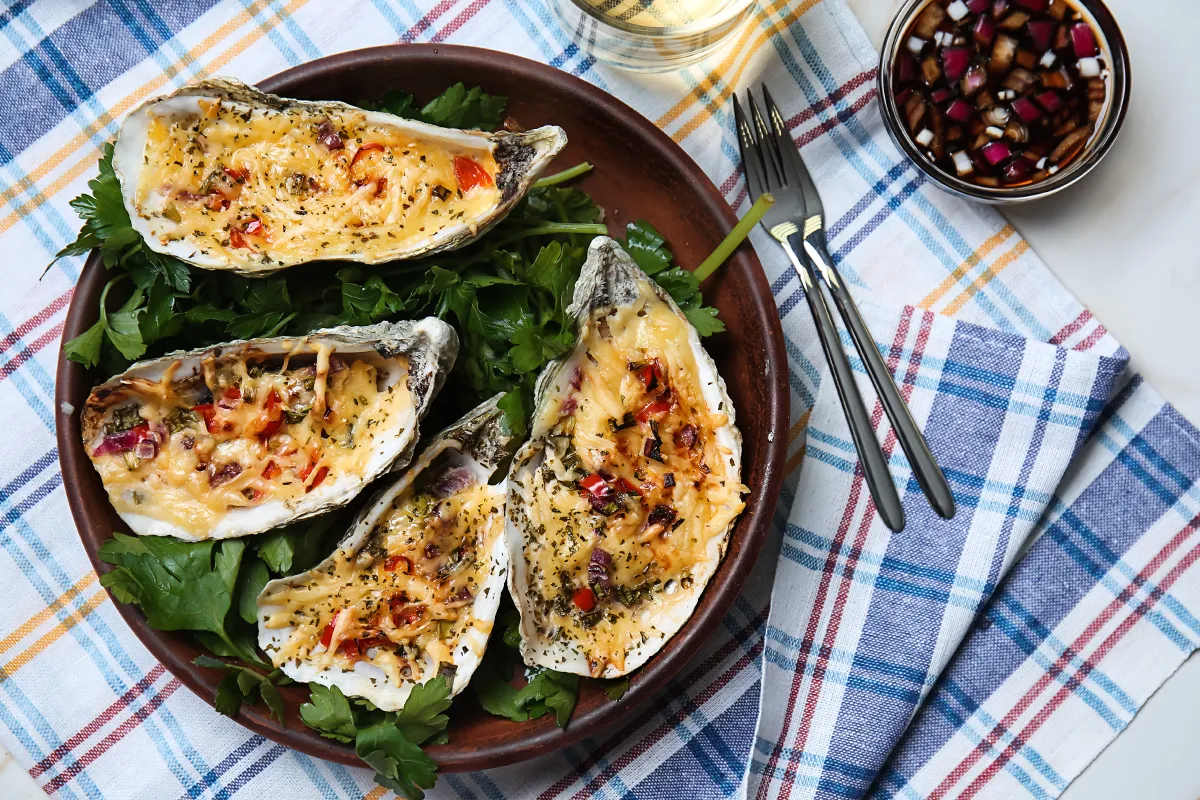
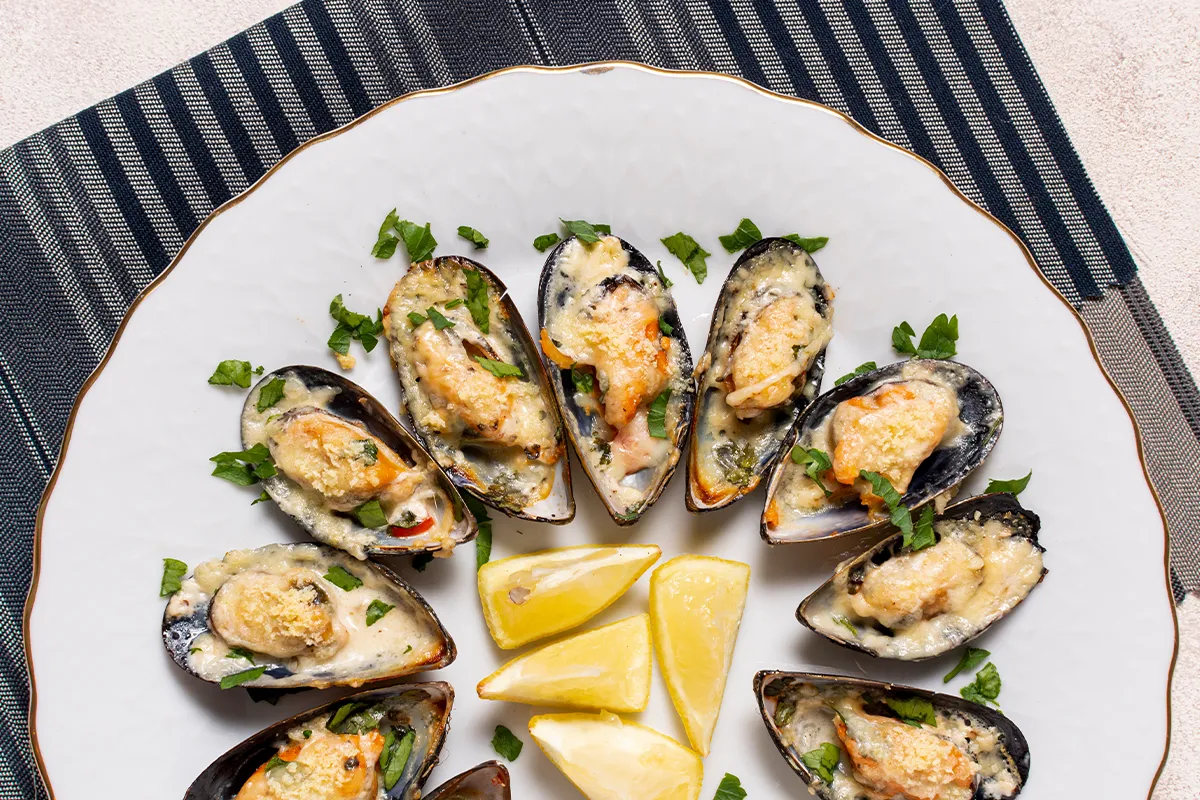
A Brief History of Baked Oysters
Baked oysters have a long history that dates back to ancient times. Oysters were considered a delicacy in ancient Rome, and they were often baked or roasted to enhance their flavor.
Over the centuries, different cultures have developed their own versions of baked oysters, adding various ingredients to create unique dishes. The idea of adding cheese to baked oysters is believed to have originated in France, where cheese is often paired with seafood to create rich and flavorful dishes.
Today, cheese baked oysters are enjoyed all over the world, and they have become a popular choice for those who love seafood.
Quick Cooking Tips
- Prep in Advance: You can prepare the topping in advance and store it in the fridge until you’re ready to bake.
- Use Fresh Oysters: Fresh oysters will always yield the best flavor. If you can, buy oysters on the day you plan to cook them. You can find them by looking up ‘seafood near me’ or visiting any local market nearby.
- Shuck Safely: If you’re shucking oysters yourself, use a proper knife and a towel to protect your hand.
Classic Cheese Baked Oysters
Ingredients You’ll Need
To make classic cheese baked oysters, you’ll need the following ingredients:
- 12 fresh oysters, shucked
- 1/2 cup grated Parmesan cheese
- 1/2 cup shredded mozzarella cheese
- 1/4 cup unsalted butter, melted
- 2 cloves garlic, minced
- 1 tablespoon lemon juice
- 1 tablespoon chopped parsley
- Salt and pepper
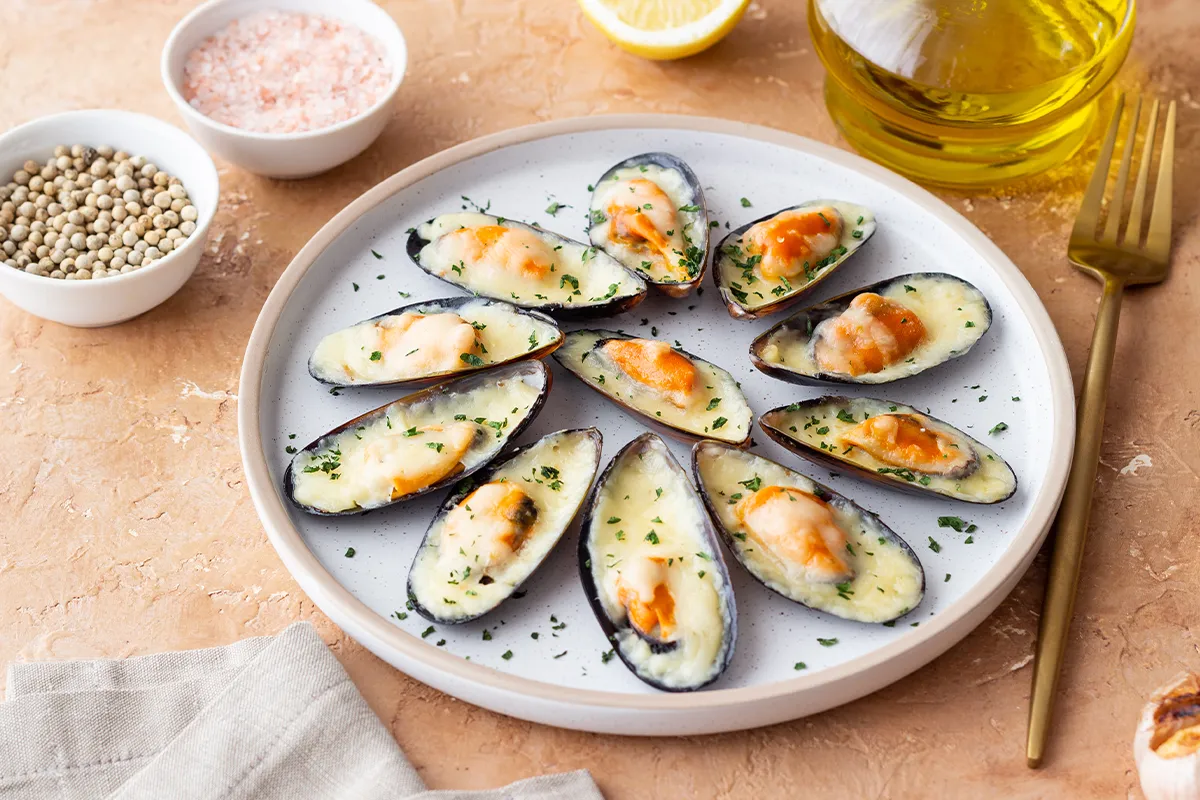
Step-by-Step Instructions
- Preheat Your Oven: Start by preheating your oven to 375°F (190°C). This temperature is perfect for getting the cheese to melt nicely without overcooking the oysters.
- Prepare the Oysters: Place the shucked oysters on a baking sheet lined with foil or in an oven-safe dish. Make sure the oysters are spread out evenly so that they cook uniformly.
- Mix the Topping: In a small bowl, mix the melted butter, minced garlic, lemon juice, and parsley. Drizzle this mixture over the oysters, ensuring each one coats well.
- Add the Cheese: Sprinkle the Parmesan and mozzarella cheeses evenly over the oysters. The combination of these two cheeses will create a golden, bubbly topping.
- Bake: Place the oysters in the preheated oven and bake for about 10-12 minutes, or until the cheese is melted and slightly golden.
- Serve: Once baked, remove the oysters from the oven and let them cool for a minute before serving. Garnish with extra parsley if desired.
Tips for Perfectly Melted Cheese
- Use Fresh Cheese: Freshly grated cheese melts better and has a more robust flavor than pre-packaged shredded cheese.
- Avoid Over-baking: Over-baking can cause the cheese to become too hard and the oysters to dry out. Keep an eye on them and remove them from the oven as soon as the cheese melts and becomes golden.
- Experiment with Cheese Combinations: Try mixing different cheeses, like Gruyère or cheddar, for a unique flavor twist.
How to Avoid Overcooked Oysters
- Watch the Time: Oysters cook quickly, so keep a close eye on them while they’re in the oven.
- Use a Thermometer: If you’re unsure, use a meat thermometer. Oysters are done when they reach an internal temperature of 140°F (60°C).
- Remove from Oven Early: Remember, oysters will continue to cook for a minute or two after you remove them from the oven, so it’s better to take them out a little early.
Gourmet Roasted Oysters with Fresh Cheese
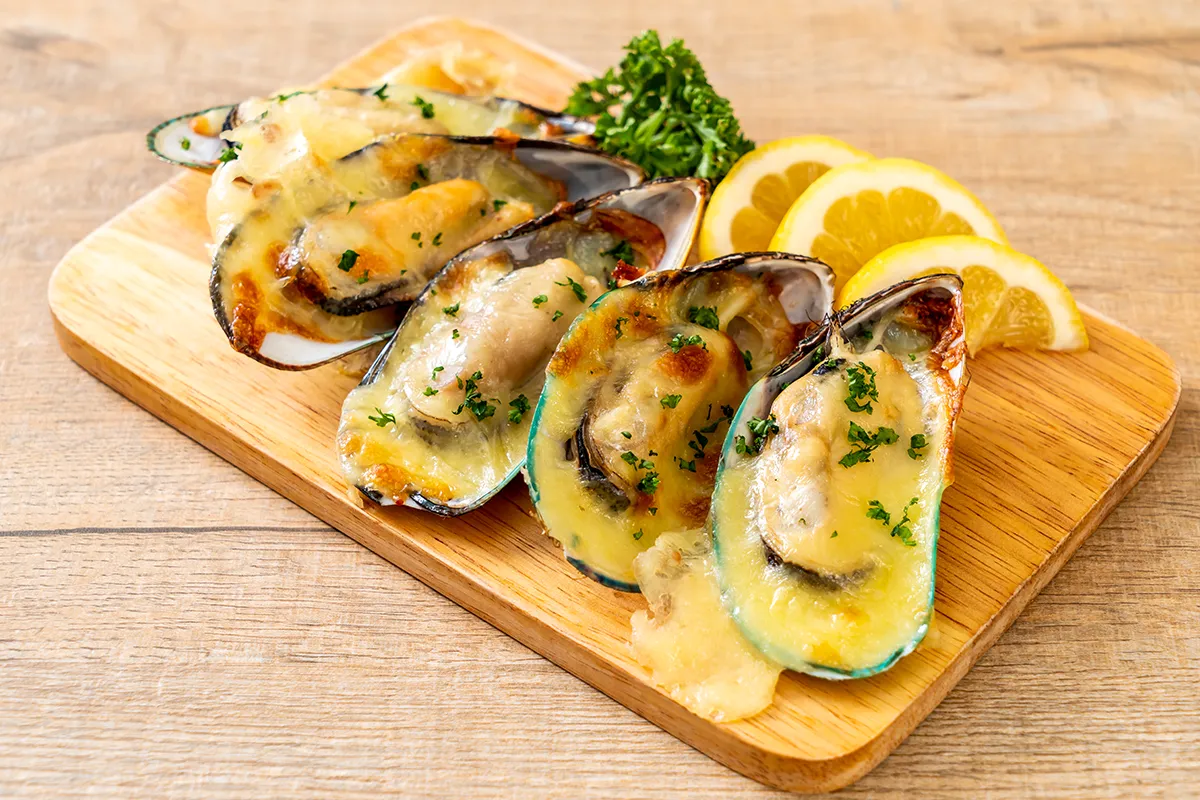
For those who want to take their cheese baked oysters to the next level, gourmet roasted oysters with fresh cheese is a great option. This version adds a few extra ingredients and roasting techniques for a more sophisticated flavor.
Ingredients for a Gourmet Twist
- 12 fresh oysters, shucked
- 1/2 cup crumbled blue cheese or goat cheese
- 1/4 cup breadcrumbs
- 2 tablespoons unsalted butter, melted
- 2 cloves garlic, minced
- 1 tablespoon white wine
- 1 teaspoon fresh thyme leaves
- Salt and pepper
Roasting Techniques for Maximum Flavor
- Preheat Your Oven: Set your oven to 400°F (200°C) for a higher heat that will enhance the roasting process.
- Prepare the Oysters: Place the shucked oysters on a baking sheet or in an oven-safe dish. For a gourmet touch, you can also place them on a bed of rock salt, which helps to keep them stable while baking.
- Mix the Topping: Combine the melted butter, minced garlic, white wine, and thyme leaves in a bowl. Drizzle this mixture over the oysters.
- Add the Cheese and Breadcrumbs: Sprinkle the crumbled blue cheese or goat cheese over the oysters, followed by a light layer of breadcrumbs. The breadcrumbs will add a nice crunch to the dish.
- Roast: Place the oysters in the oven and roast for about 8-10 minutes, or until the cheese melts and the breadcrumbs are golden.
- Serve: Once done, remove from the oven and let cool slightly before serving. These oysters pair beautifully with a glass of chilled white wine.
How to Choose the Right Fresh Cheese
- Blue Cheese: Adds a sharp, tangy flavor that contrasts nicely with the sweetness of the oysters.
- Goat Cheese: Offers a creamy texture and a mild, slightly tangy taste that complements the oysters without overpowering them.
- Experiment with Local Cheeses: Depending on your location, try using local artisanal cheeses for a unique, regionally inspired dish.
Variations for Personal Taste
- Add Bacon: Crumble some cooked bacon over the oysters before adding the cheese for a smoky, savory twist.
- Spicy Kick: Sprinkle a little cayenne pepper or red pepper flakes over the cheese for some heat.
- Herbaceous Flavor: Add fresh herbs like dill, chives, or tarragon to the cheese topping for a fresh, aromatic flavor.
Best Accompaniments
- Garlic Bread: The perfect side for soaking up any leftover buttery, cheesy goodness.
- Salad: A crisp, refreshing green salad dressed with a citrus vinaigrette complements the richness of the oysters perfectly.
- Grilled Vegetables: Grilled asparagus or zucchini provide a smoky flavor that pairs nicely with the oysters.
- Chardonnay: A buttery Chardonnay pairs beautifully with cheese baked oysters, complementing the richness of the dish.
- Champagne: The bubbles in Champagne help to cleanse the palate between bites, making it a great choice for this rich dish.
- Beer: A light, crisp beer like a Pilsner or a wheat beer can also pair well with the cheesy oysters.
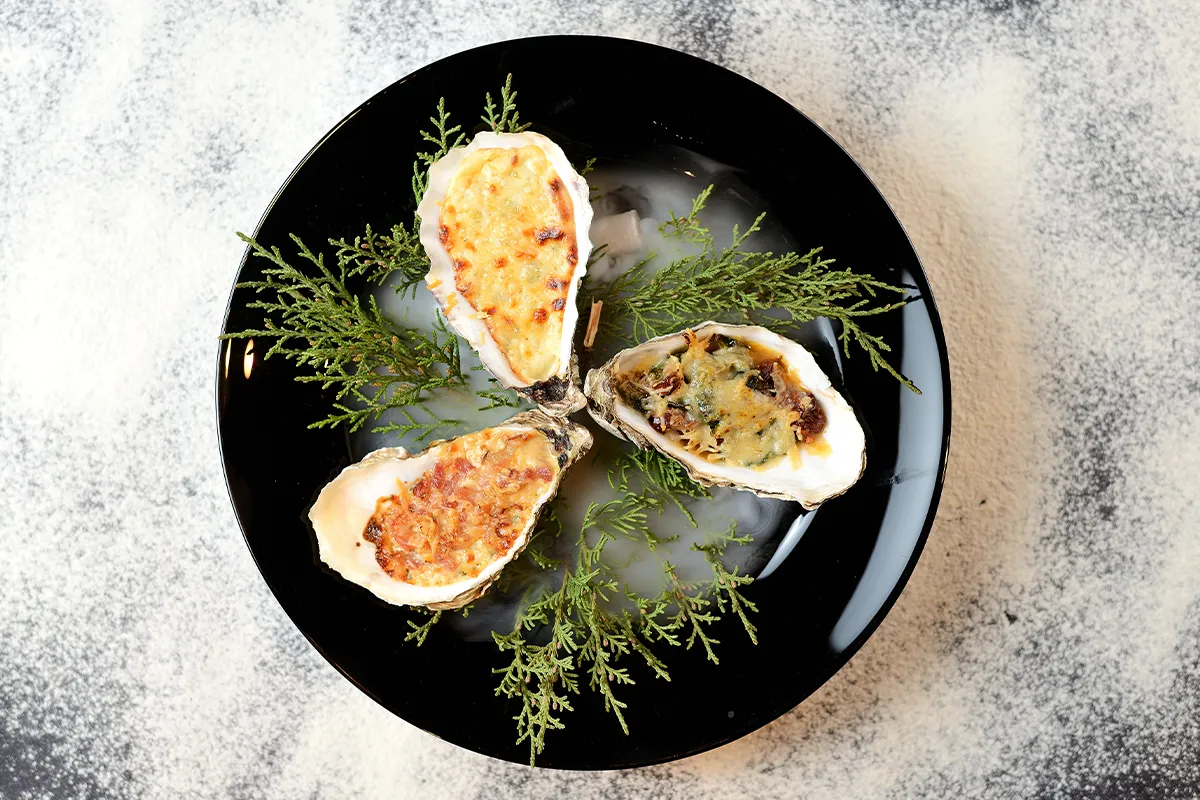
Fixing Common Mistakes
- Low and Slow: If you prefer a creamier texture, try baking the oysters at a lower temperature (around 350°F or 175°C) for a longer time.
- Add Cream: Drizzle a little heavy cream over the oysters before adding the cheese for an extra creamy finish.
- Don’t Overcrowd: Make sure there’s enough space between the oysters on the baking sheet to allow the cheese to melt evenly.
- Too Salty: If your oysters turn out too salty, try adding a squeeze of fresh lemon juice to balance the flavor.
- Cheese Not Melting: If your cheese isn’t melting properly, try using a broiler for the last minute.
- Oysters Sticking to the Shell: If the oysters are sticking to the shell, you can use a small spoon to gently loosen them before serving.
frequently asked questions
Can you bake oysters without shucking them?
What kind of cheese goes with oysters?
How to make cheese oyster?
Conclusion
Cheese baked oysters are a delightful dish that combines the best of seafood and cheesy goodness. Whether you’re making the classic version or experimenting with gourmet variations, this recipe is sure to become a favorite. With the right ingredients, careful attention to baking, and a few tips and tricks, you can create a seafood dish that’s perfect for any occasion. So next time you’re looking for something special to add to your seafood menu, give cheese baked oysters a try—you won’t be disappointed!
